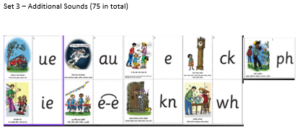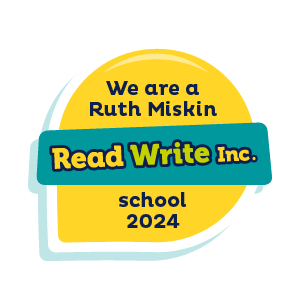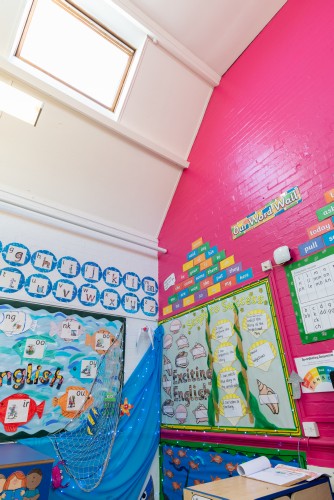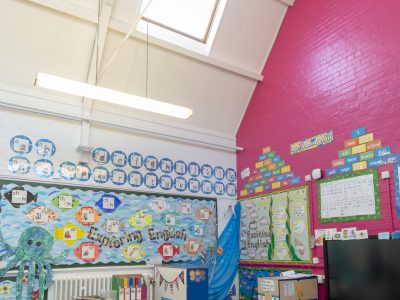Welcome to Bourne Abbey
Find Out MoreReading and Phonics at Bourne Abbey
We aim to nurture a lifelong love of reading within our children.
Reading for pleasure There is overwhelming evidence that literacy has a significant relationship to people’s life chances. Reading for pleasure is more important than either wealth or social class as an indicator of success at school. We as adults are the most important reading role models for children and young people, yet according to the Reading Agency, only 1 in 5 parents easily find the opportunity to read to their children. What does reading do for our children?
1. Children who read often and widely get better at it After all, practice makes perfect in almost everything humans do, and reading in no different.
2. Reading exercises our brain Reading is a much more complex task for the human brain rather than watching TV, for example. Reading strengthens brains connections and builds NEW connections.
3. Reading improves concentration Children have to sit still and quietly so that they can focus on the story when they are reading. If they read often, they will develop the skill to do this for longer.
4. Reading teaches children about the world around them Through reading a variety of books children learn about people, places, and events outside of their own experience.
5. Reading improves vocabulary and language skills Children learn new words as they read. Subconsciously, they absorb information on how to structure sentences and how to use words and other language features effectively in their writing and speaking.
6. Reading develops a child’s imagination As we read, our brains translate the descriptions we read of people, places and things into pictures. While we are engaged in a story, we are also imagining how a character is feeling. Young children then bring this knowledge into their everyday play.
7. Reading helps children to develop empathy As children develop, they begin to imagine how they would feel in that situation.
8. Reading is fun A book or an e-reader doesn’t take up much space and is light to carry, so you take it anywhere so you can never be bored if you have a book in your bag.
9. Reading is a great way to spend time together Reading together on the sofa, bedtime stories and visiting the library are just some ways of spending time together.
10. Children who read achieve better in school Reading promotes achievement in all subjects, not just English. Children who are good readers tend to achieve better across the curriculum.
Talking about books Once children have learned to read, comprehension of what the words are telling you becomes an important skill to practice, and reading to your child is a good way. Just a few of the multitude of techniques that could encourage discussion about a book are:
- Ask them to re-cap what’s already happened
- Ask them to guess what might happen next
- Get them to tell you how they would feel
- Ask them to draw links and comparisons with other books they have read
Fiction vs non-fiction Many children have a preference for either stories or fact books, but it is important to get a mix. Fiction helps children have empathy with other people, understand characters and how they relate to each other, while non-fiction gives children the ability to understand facts and more complex ideas. A book at bedtime Reading a story to your child at bedtime is a great way to end the day and a lovely way of enjoying reading for pleasure. Reading to your child gives them access to stories and vocabulary that they might not be able to read so fluently themselves and is great for reluctant readers too. A story at the end of the day is also part of a good night time routine that can help your child settle and wake up refreshed ready for the next day. After all
“The more that you read, the more things you will know. The more that you learn, the more places you’ll go.” Dr Seuss
We believe children achieving fluency in English is essential if they are to both access and succeed across all areas of the curriculum. Confidence and competence in reading, writing and spoken language play vital roles in preparing children for the next stage of their learning, and indeed throughout their adult lives. Through reading in particular, pupils have a chance to develop culturally, emotionally, intellectually, socially and spiritually. Literature, especially, plays a key role in such development. Reading also enables pupils both to acquire knowledge and to build on what they already know. We endeavour to ensure children reach their full potential in these areas by providing an inspiring, relevant and rigorous English curriculum which promotes high standards of language and literacy, equips pupils with a strong command of spoken and written word, and develops a life-long love of literature through reading and writing for enjoyment.
We aim for our pupils to:
- Develop a love of reading for pleasure and to enjoy discussing and justifying their reading preferences
- Be able to select appropriate text types and extract relevant information when reading for learning
Reading starts within our EYFS provision through our Phonics scheme: Read Write Inc teaching synthetic phonics. This is a well-established and embedded phonics programme that we have been using for many years to provide all of our pupils with a successful start on their reading journey. This gives our children a great foundation to reading, which is then taken into Year 1 and carried into Year 2 if needed. Alongside and after the Read Write Inc scheme we use a blended approach to reading using high quality books from a range of schemes including Read Write Inc, Oxford Reading Tree and Project X
What does the rest of our reading provision look like?
- Every child reads to their class teacher (KS1/LKS2 once and UKS2 once a fortnight) allowing teachers to monitor their progress and identify next steps. Vulnerable readers are highlighted and intervention is put in place.
- The process of intervention is ‘keep up not catch up’.
- Whole class reading sessions provide opportunities to expose children to a range of high quality text e.g archaic texts, texts with complex plots etc. In these sessions, teachers use discussions and questioning to develop children’s comprehension skills and love of reading for pleasure.
- Reading is seen as an essential element of each English unit of study. All staff understand the importance of the explicit teaching of reading skills and four core reading behaviours- fluency, stamina, self-regulation, active reading.
- Reading is prioritised across the wider curriculum and opportunities for children to apply their reading skills are planned for and utilised across a wide range of subjects.
- The schools participate in national events designed to develop a love of reading, such as World Book Day, National Poetry Day and Roald Dahl Day
- The Pawsome Gang is embedded throughout all year groups and key stages ensuring children understand different question types and the strategies needed to tackle each question
- The children are able to select home reading books from our selection of banded books matched to their reading ability. Classroom reading corners offer a wide selection of ‘real books’, which again, children can take home to enjoy as additional reading material with their parents/carers.
- Throughout the school year the importance of reading is enhanced through World Book Day, author and poet visits, Book Fairs, reading rewards for the amount of reads at home to further enrich our English curriculum. Also, children have access to our school library, which is open every lunchtime for children in Key Stage Two.
- We frequently attempt to engage parents and help them understanding the importance of hearing their children read and reading to their child. Other opportunities used to engage parents: parent workshops, story sacks, parents evening, reading resources.
Language Acquisition & Vocabulary Development
We endeavour to ensure we provide our pupils with a ‘language rich’ environment. Within our classrooms, we explore ambitious vocabulary across the wider curriculum to ensure we acquire an understanding of a breadth & depth of language with our knowledge organisers, termly vocabulary grids and working walls.
We aim to share our vision of high aspirations for all of our pupils through our high expectations across the wider curriculum; by setting these high expectations, our pupils are aware of the standards we expect in all lessons and learning opportunities.
As children’s reading develops at different rates, teaching is tailored to each child and their ability. Children will read daily in the classroom, either in shared reading, one to one reading or guided reading groups. Children are encouraged to read a range of books in school and at home and communication between staff and parents is encouraged.
Year 6 Reading Workshop
Year 6 Workshop Resources and Activities Link:
Year 6 Virtual Reading Workshop Resources
Year 2 Reading Workshop
https://www.youtube.com/watch?v=ttqQqme1u0M
Year 2 Workshop Resources and Activities Link:
Phonics at Bourne Abbey- Read Write Inc
Early Reading and Phonics at AAT
“Teach a child to read and keep that child reading and we will change everything. And I mean everything.” Jeanette Winterson
What is phonics?
Phonics is for children in Reception, Y1 and Y2 who are learning to read. It is also for KS2 children in who haven’t met the KS1 reading expectations. At our Trust we use the highly renowned phonics scheme, ‘Read Write Inc.’
RWI teaches children to read and write sounds, practice reading and spelling words containing these sounds and then apply these skills learnt in decodable books. Children will learn Set 1, Set 2 and Set 3 sounds during their time in Rec and KS1 and when necessary KS2 using RWI’s Phonics Tutoring programme so that children, ‘Keep up, not catch up.’ RWI sessions and Phonics Tutoring ensures that all children learn to read accurately and fluently with books matched to their phonic knowledge.
Why do we teach phonics in this order?
As a school, we teach phonics using Read, Write, Inc. (RWI) resources which refers to phonics in sets of 1, 2 and 3.


Phonics by Year Group:
For more information on how we teach phonics please see our Phonics Progression document.
Early Reading and Phonics Progression at AAT
Key Stage One Phonics Workshop
“Learning to read begins the first time an infant is held and read a story. How often this happens, or fails to happen, in the first five years of childhood turns out to be one of the best predictors of later reading.”― Maryanne Wolf
Read, Write, Inc Phonics & Early Reading at Home
Here are some helpful videos to support your child in Phonics and Early reading at home
What is RWI Phonics?
https://schools.ruthmiskin.com/training/view/MJx8FWAR/bQnlgrrM
Understanding Phonics:
https://schools.ruthmiskin.com/training/view/FxVZ4lYe/06wscHB3
How to say the sounds:
https://schools.ruthmiskin.com/training/view/9dlYxQi6/UtTdYJ14
Sound-Blending
https://schools.ruthmiskin.com/training/view/ct2VlMaO/fYZ8vfoi
Reading the digraphs with your child:
https://schools.ruthmiskin.com/training/view/KqxhT3P4/FQjHqEZ
Listening to your child read:
https://schools.ruthmiskin.com/training/view/K39QgSxg/C8g2o0VJ
Why read to you child?
https://schools.ruthmiskin.com/training/view/70psLque/AskuS3O



